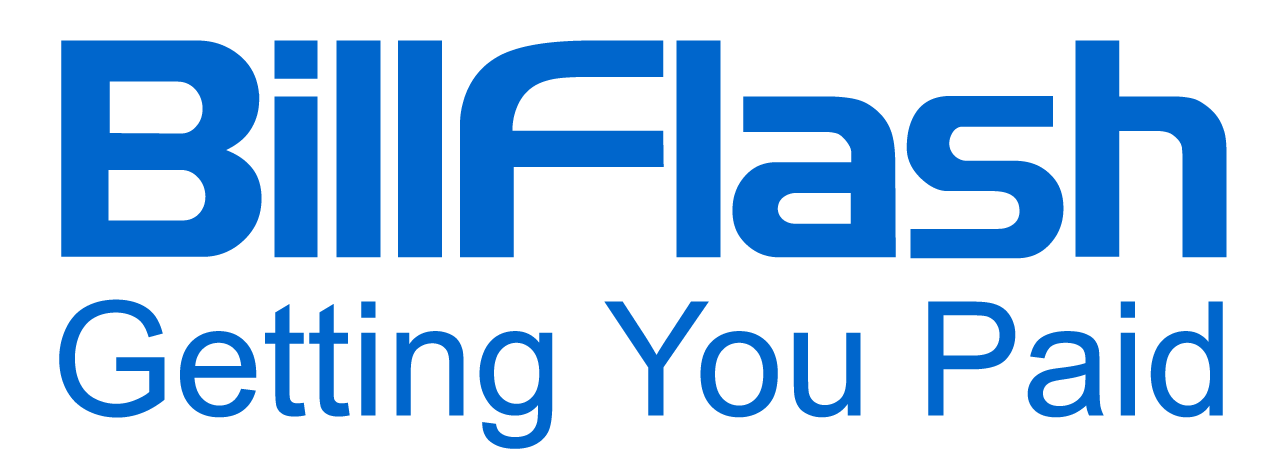Discover hidden leaks in your healthcare revenue cycle and how strategic solutions can recover lost revenue and improve patient satisfaction.
Healthcare revenue cycle management is one of the most critical—yet often overlooked—aspects of running a successful medical practice. Even high-performing medical practices lose significant revenue to preventable leakage, highlighting the importance of effective revenue cycle management. These leaks frequently go unnoticed, hurting profitability month after month. These leaks quickly eat away at bottom lines, from missed payment opportunities to outdated payment processes.
While practices often focus on other errors, subtle gaps in patient financial interactions create persistent leaks. The good news? Identifying and stopping these leaks doesn't require a complete overhaul of your existing process. With the right strategies and tools, practices can recover lost revenue and improve cash flow.
Today, we’ll highlight five hidden leaks in your healthcare revenue cycle and explain how the right strategies can address them to recover lost revenue and enhance patient satisfaction.
Failure to Set Expectations Upfront Leaves Revenue on the Table
The Revenue Leak
A lack of upfront cost transparency.
When patients lack clarity on their financial responsibility before care is delivered, practices face a dual risk: reduced upfront collections and increased accounts receivable aging. For example, a patient walks into your practice and receives excellent care, but leaves without clues about their financial responsibility. When the bill arrives weeks later, they're blindsided—and less likely to pay promptly, if at all. This lack of cost transparency represents a significant leak in your healthcare revenue cycle.
Patients may delay payments if providers don’t set clear expectations before the visit. They may also allow bills to age into collections or avoid returning for future care. According to a survey by the Commonwealth Fund, many insured patients have faced unexpected medical bills, contributing to hesitancy around seeking care and paying ahead of the due date. This uncertainty disrupts your cash flow and damages patient trust.

The Solution
Provide clear and upfront cost estimates and educate patients on their financial responsibility before visits.
Providers can implement several strategies to improve financial transparency and enhance the patient billing experience. First, providing cost estimates early—based on insurance coverage and planned services—allows patients to understand their potential out-of-pocket expenses ahead of their appointments, helping them to budget wisely. This information can also help build trust and minimize unexpected charges, improving the healthcare revenue cycle.
Using plain language and visual aids, like charts or FAQs, also helps patients better understand their financial responsibilities. These steps foster transparency, increase patient satisfaction, and improve the chances of collecting payments upfront or shortly after service. Tools like BillFlash PreBill support these efforts by providing patients with pre-visit cost estimates. PreBill sends patients a secure link via text or email, directing them to our secure payment portal, PayWoot.com, where they can view and pay their bills.
PreBill provides versatility for in-office and telehealth appointments, flexible communication via text and email, and payment collection without a formal bill. By sending cost estimates upfront, your practice can reduce the risk of delayed or unpaid bills. Patients appreciate the price transparency, which builds trust and encourages timely payments. With PreBill, you won’t just plug a leak in your healthcare revenue cycle—you’ll improve the patient experience and secure revenue faster.
Missed Opportunities for Timely Patient Communication
The Revenue Leak
Missed or inconsistent patient bill reminders lead to delayed or lost payments and reduced revenue.
Infrequent or confusing communication is another revenue leak in healthcare revenue cycle management. This can lead to delayed payments or worse, no payments at all. Patients who don’t receive consistent, detailed notices about their bills tend to forget or ignore them. Practices also lose significant revenue when bills sit unpaid due to poor follow-up.
Effective patient communication, such as bill notices, has been noted as a proven tactic known to boost collection rates. Practices that rely on inconsistent mailed statements also miss out on this opportunity since more patients look for modern, accessible notices. In 2023, provider organizations wrote off over $17 billion in bad debt, much of which may stem from inadequate patient communication strategies.
The Solution
Implement automated communication like BillFlash eBills to ensure timely, effective communication that leads to faster patient payments.
Practices can strengthen their healthcare revenue cycle by focusing on effective communication strategies that improve payment collection and reduce uncollected balances. Sending prompt billing statements shortly after service—and following up regularly—helps keep payments on patients' minds. Using multiple communication channels—mail, email, and text—boosts the chances of notices reaching patients via their preferred method. In addition, customizing messaging to match your practice's brand makes communications more engaging and actionable. By prioritizing consistent and clear communication, practices can speed up payment cycles and improve revenue flow.
BillFlash eBills supports these strategies through automated, HIPAA-compliant bill delivery via text and email. This approach aligns with consumer preferences—62% of patients prefer digital payment notifications—while considering security standards. Every eBill comes with a secure link that leads to our secure payment portal, PayWoot.com.
eBill Notices and mailed bills with QR codes direct patients to the online payment portal, where they can view and pay their bills. Accepting online payments reduces costs and complications for staff, streamlining workflows compared to manual payment processing methods. Practices implementing structured communication strategies often see faster payment turnaround and fewer billing-related calls, strengthening their healthcare revenue cycle.
Limited or Inconvenient Payment Options
The Revenue Leak
Limited payment options create friction for patients.
Over 60 percent of patients prefer paying their medical bills using patient portals. However, the healthcare industry continues to rely on paper-based payment systems and manual processes. When practices limit options—such as only accepting checks or requiring in-person payments—they create friction that can delay collections or result in patients not paying. This is another leak that can significantly affect your healthcare revenue cycle.

The Solution
Offer more convenience when it comes to payment options.
Practices should expand their accepted payment methods to accommodate a wide range of patient preferences. This includes credit and debit cards, digital wallets like Apple Pay and Google Pay, cash, and checks. Offering multiple payment channels—online, in-office, by phone, or by mail—helps meet diverse patient preferences. This way, patients can choose the method that works best for them. Simplifying the payment process with clear instructions and minimal steps encourages faster payment and improves the patient experience.
BillFlash Pay aligns with these strategies by providing a payment platform that helps get you paid faster. With OnlinePay, patients can pay anytime, from anywhere, reducing the burden on your staff and eliminating the costs associated with manual payment handling. OfficePay allows your staff to process payments securely and efficiently within the office with multiple payment options.
For patients who prefer structured payment methods, PlanPay and AutoPay provide convenient automated plans that improve the patient experience while improving your healthcare revenue cycle. PlanPay allows the setup of automated payment plans, allowing for full payment over an agreed-upon schedule. This helps prevent defaults and reduces the need for costly collection alternatives. AutoPay enables patients to automatically pay their bills in full each time a new bill is sent. In addition, our Payment Gateway integrates seamlessly with BillFlash merchant accounts—or your existing merchant account—making it easy to manage transactions smoothly.
Failure to Address Affordability With Financing Options
The Revenue Leak
Failing to offer affordable payment options.
High medical costs can overwhelm patients, especially those with high-deductible plans or no insurance. This often leads them to hold off or skip payments, leaving practices with uncollected revenue. According to KFF, over 20 million patients owe medical debt, and the Survey of Income and Program Participation estimates that the debt is at least $220 billion.
The Solution
Provide flexible financing like payment plans to ensure patients can pay over time while collecting in full.
Practices can introduce payment plans that allow patients to spread out their costs over time, making payments more manageable. Partnering with third-party financing providers to offer low or no-interest loans can also ease the stress on patients. In addition, informing patients about financing options during patient billing discussions encourages them to use those options. By addressing affordability, practices ensure that patients can pay without more financial strain, eventually preserving your healthcare revenue cycle.
BillFlash FlexPay allows patients to finance their care with no risk to the practice—providers get paid upfront while patients pay over time. This solution is easy for patients to apply for, with an online application that takes less than one minute to complete and a 90% approval rate. FlexPay offers an interest-free option, ensuring affordability for more patients. For practices, FlexPay helps attract and retain patients by making care more accessible and improving patient-provider relationships, all while receiving faster payments and reducing the risk of non-payment.
Ineffective or Nonexistent Collections Strategy
The Revenue Leak
An ineffective or nonexistent collections strategy that leads to unpaid accounts piling up.
The average healthcare provider waits up to 47 days to collect patient payments. However, high-performing medical practices generally spend between 30 and 40 days in A/R. With patient collection rates falling to 48%—driven partly by insured patients' unpaid balances—this leak in the healthcare revenue cycle needs attention. Without a proactive strategy, your practice wastes time and loses money chasing overdue payments.

The Solution
Implement an automated collections process.
Implementing an automated collections process, using software to send reminders and escalate overdue accounts, while establishing clear policies for collections and monitoring key performance metrics can help address this healthcare revenue cycle leak. BillFlash Integrated Collections Services offers automated, provider-controlled collections with real-time payment posting and direct deposit. This service simplifies collections by allowing providers to manage the rules for which accounts should be sent to collections.
BillFlash has licensed recovery specialists across all 50 states, 75% of whom are bilingual. This guarantees clear communication in patients' preferred language, leading to higher recovery rates. Meanwhile, direct deposits ensure providers get paid promptly, without waiting for a collections agency to take their cut.
Stop the Leaks, Strengthen Your Revenue
These five hidden leaks—failure to set expectations upfront, missed communication opportunities, limited payment options, lack of financing, and ineffective collections—may be silently killing your healthcare revenue cycle. However, with the right technology partner like BillFlash, your practice can implement proper billing, payments, and collection solutions, all integrated for the highest efficiency. BillFlash also integrates with over 100 billing applications, ensuring a smooth transition without disrupting existing workflows.
Ready to stop revenue from slipping through the cracks? Schedule a demo with BillFlash today to see how our billing, payment, and collection solutions can help you recover lost revenue and accelerate cash flow.

